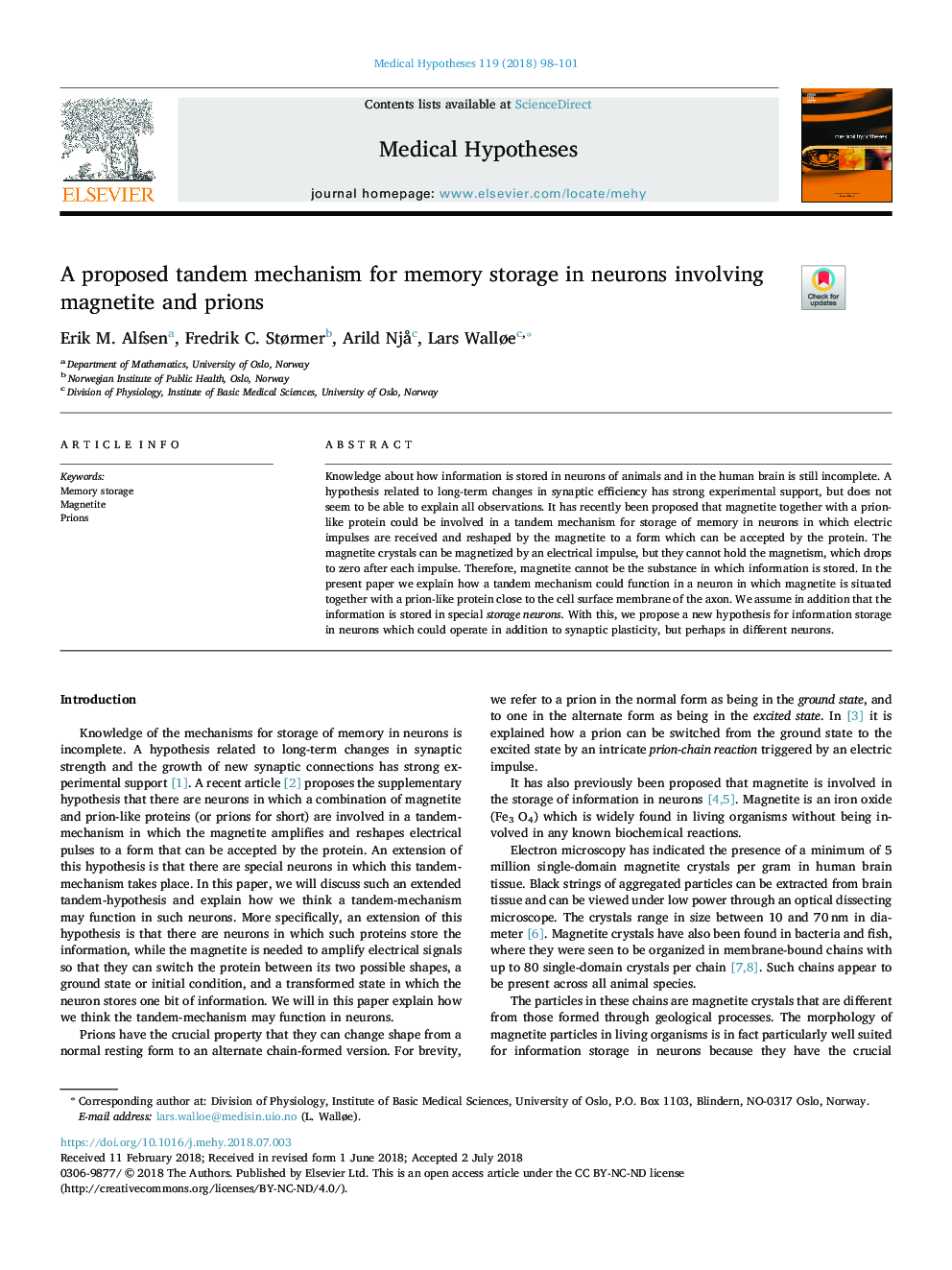| Article ID | Journal | Published Year | Pages | File Type |
|---|---|---|---|---|
| 8515190 | Medical Hypotheses | 2018 | 4 Pages |
Abstract
Knowledge about how information is stored in neurons of animals and in the human brain is still incomplete. A hypothesis related to long-term changes in synaptic efficiency has strong experimental support, but does not seem to be able to explain all observations. It has recently been proposed that magnetite together with a prion-like protein could be involved in a tandem mechanism for storage of memory in neurons in which electric impulses are received and reshaped by the magnetite to a form which can be accepted by the protein. The magnetite crystals can be magnetized by an electrical impulse, but they cannot hold the magnetism, which drops to zero after each impulse. Therefore, magnetite cannot be the substance in which information is stored. In the present paper we explain how a tandem mechanism could function in a neuron in which magnetite is situated together with a prion-like protein close to the cell surface membrane of the axon. We assume in addition that the information is stored in special storage neurons. With this, we propose a new hypothesis for information storage in neurons which could operate in addition to synaptic plasticity, but perhaps in different neurons.
Keywords
Related Topics
Life Sciences
Biochemistry, Genetics and Molecular Biology
Developmental Biology
Authors
Erik M. Alfsen, Fredrik C. Størmer, Arild Njå, Lars Walløe,
